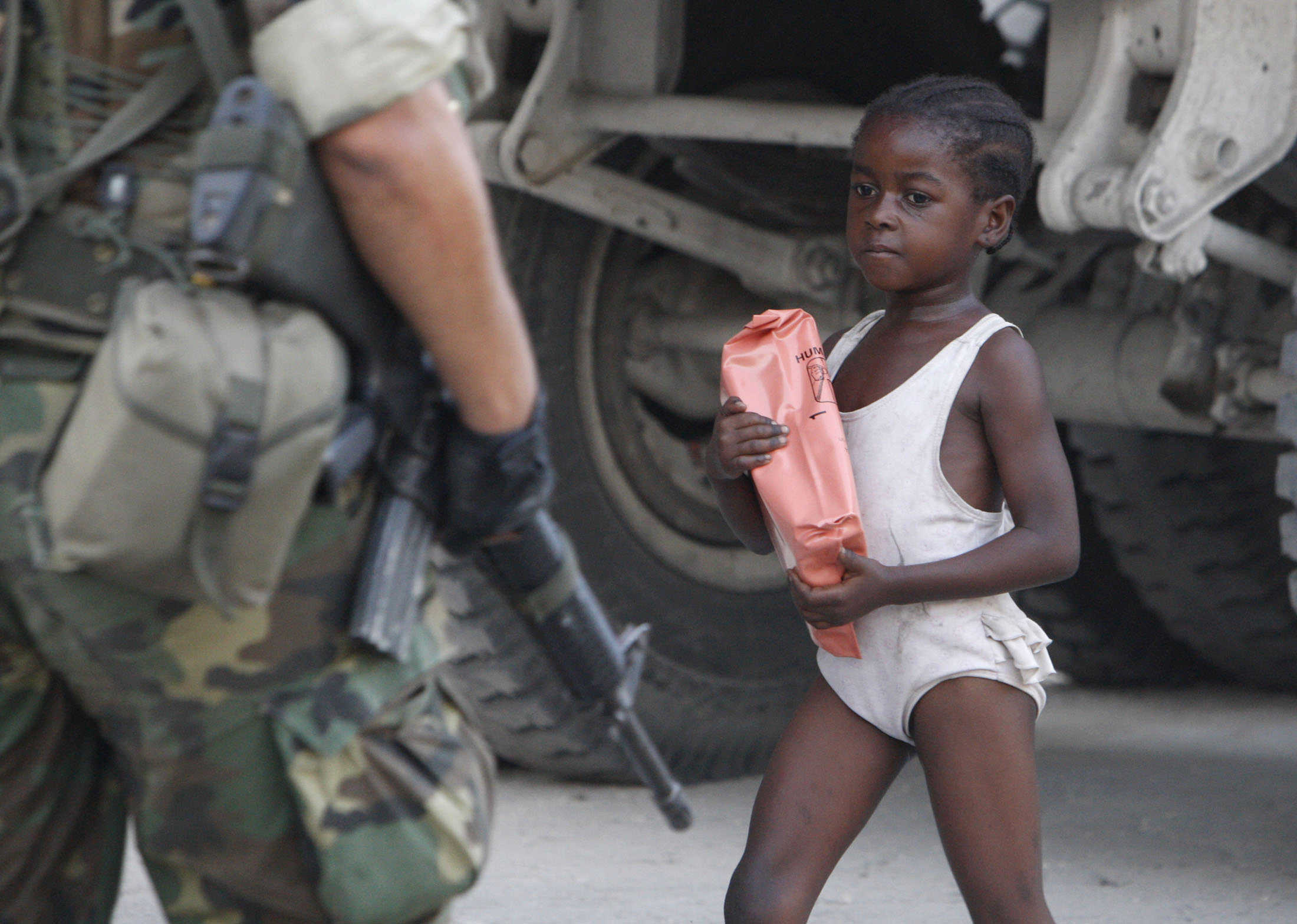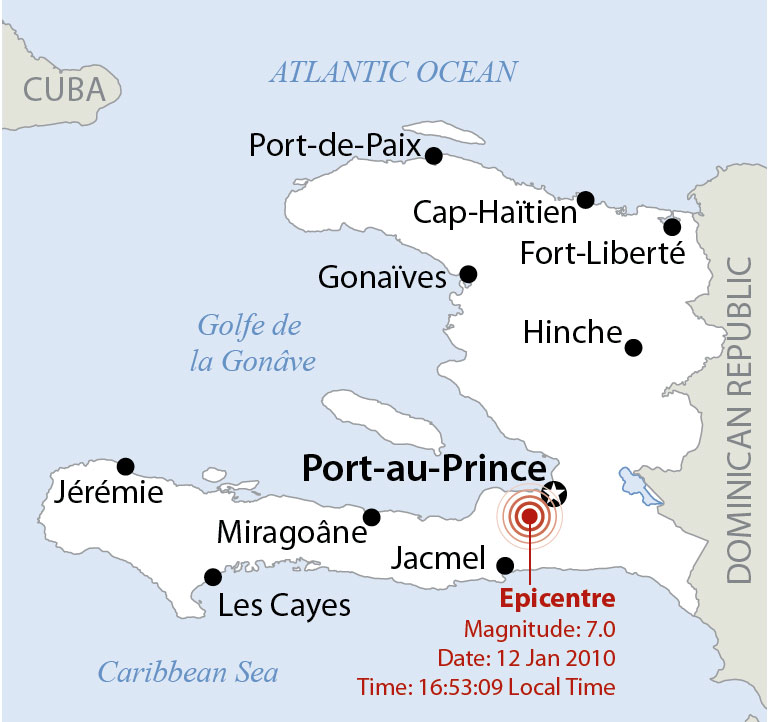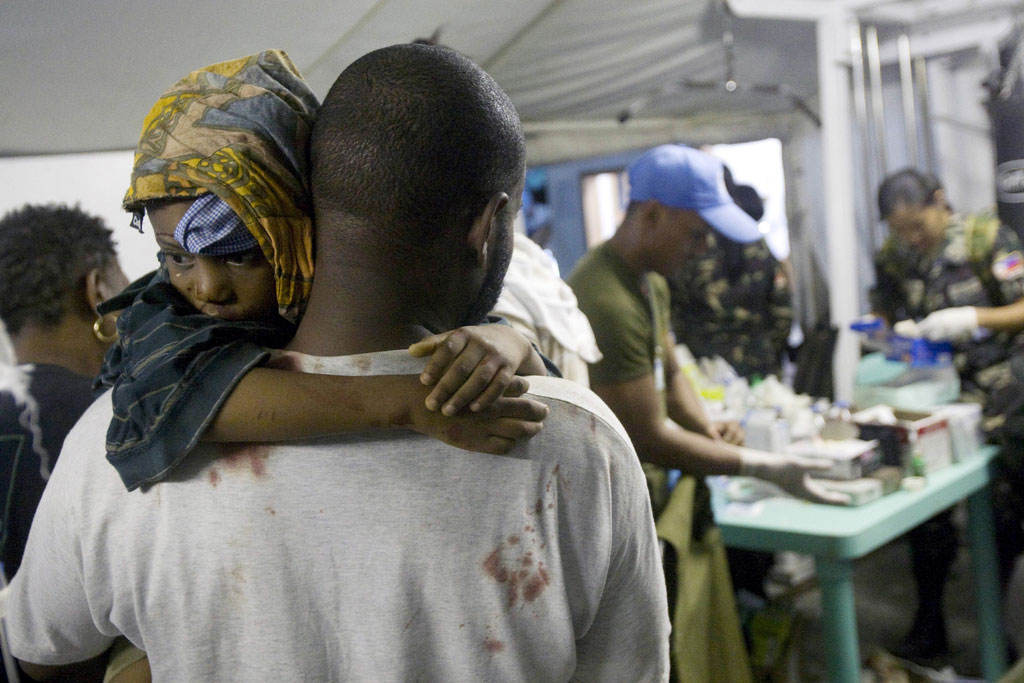Frustration grows at pace of Haiti aid effort

One week after the devastating earthquake crippled Haiti, it is still proving difficult to translate international goodwill into practical help.
With up to three million people in need, massive operational challenges are hampering the relief effort in the troubled Caribbean state.
The small airport just outside the capital, Port-au-Prince, is damaged and congested, while the port itself is non-operational. Aid that has arrived is being held up by vehicle and fuel shortages, as well as security issues.
There has also been wrangling over how the crisis is being managed and who should take the lead.
The United States, which controls the airport, reached an agreement with the United Nations on Monday to guarantee landing slots for aircraft carrying humanitarian assistance after being criticised for giving military and rescue aircraft priority landing rights.
In the midst of all these problems and the continued suffering of the population, frustration is growing at the pace and effectiveness of the aid response.
Doing their best
Aid agencies that are up and running in Haiti, such as the Swiss-run International Committee of the Red Cross (ICRC), say they are doing the best they can.
“The main obstacles were simply presented by the extent of the destruction,” ICRC spokesman Florian Westphal told swissinfo.ch.
“Yes we’ve faced constraints in terms of sending planes into the airport but rather than lay the blame for that at somebody’s feet, we realise that the airport has a very limited capacity because of the damage it has suffered,” Westphal said.
In addition to providing clean water for around 7,500 people, the ICRC has provided items to the Haitian Red Cross for the first-aid posts it has set up in various makeshift camps around the Port-au-Prince.
The ICRC appears to be coping with the security situation.
“We’ve been able to move around town in the last few days and do quite a lot. When we talk to our colleagues they say yes there is a certain amount of tension but they don’t feel there is any aggression which is directed against us,” Westphal said.
Resilience
Tamar Hahn of the United Nations Children’s Fund, Unicef, arrived in Haiti just after the earthquake. Violence is not as widespread as some reports suggest, she said, emphasising the resilience and calm of the Haitian people.
“It’s not the case that everything here is banditry and looting and violence. People are living in camps in conditions which are absolutely horrendous. And yet they have formed committees and they are getting organized and sharing their resources.”
“I have seen them managing in a very creative and resourceful way,” Hahn said.
Despite the loss of UN personnel and numerous logistical problems, Unicef aimed to reach 80,000 people on Tuesday with potable water.
“Another big step is that we have identified shelters which are going to be taking children who have become orphans or who have been separated from their parents,” Hahn added.
The most immediate problem she has observed is the shortage of fuel.
“This is very dangerous for the operation because it could bring it to a halt. We’ve been working around it but we just have enough for a few days and we need to sort it out because it effects everybody in the relief operation in all the agencies.”
Long and complex
The World Food Programme has called Haiti a long and complex humanitarian operation and has issued a global appeal for 100 million ready-to-eat meals in the first phase of its response.
WPF spokeswoman Natasha Scripture described Haiti as a challenge on every front and defended the achievements of the relief operation.
“It’s not that our partners are not doing enough,” she said. “As of today we distributed 250,000 daily food rations and reached some 200,000 people, which is a lot given the types of hurdles that we’re facing.”
“As the days move on, we’re going to reach more and more people as we continue to find different ways to enter the country by opening air, land and sea corridors,” Scripture added.
“It’s going to be a long, long process to get people back on their feet.”
Clare O’Dea, swissinfo.ch
Port-au-Prince airport is small, damaged and congested and the city’s port is non-operational.
There is a shortage of warehouse space, and a lack of vehicles and fuel shortages are hindering the transport of relief supplies.
Security escorts are required to deliver relief goods, affected populations are scattered in hundreds of sites around the capital Port-au-Prince and nearby cities.
Roads and bridges are damaged, some still at risk of landslides.
Logistical bottlenecks are developing because some shipments include goods that are not in the UN humanitarian appeal.
Many pledges of donations have not yet been followed by cash.
UN officials say the security situation is under control and has not hampered distribution of food to 270,000 Haitians so far.
Some 52 rescue teams race against time to find people still alive under collapsed buildings, after saving 90 people. Tens of thousands still believed buried.
The World Health Organization says at least 13 hospitals are working in or around Port-au-Prince. Doctors warn of threats to survivors from infection and disease.
UN Secretary-General Ban Ki-moon requested 3,500 more troops and police for the battered UN mission that was trying to bring stability to the dysfunctional Caribbean state even before disaster struck.


In compliance with the JTI standards
More: SWI swissinfo.ch certified by the Journalism Trust Initiative












You can find an overview of ongoing debates with our journalists here . Please join us!
If you want to start a conversation about a topic raised in this article or want to report factual errors, email us at english@swissinfo.ch.